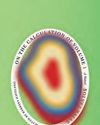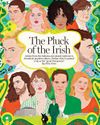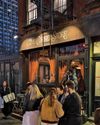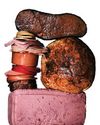
In the american southwest, birds fell dead from the sky by the tens of thousands, succumbing mid-flight to starvation, emaciated by climate change. Across the horn of africa swarmed 200 billion locusts, 25 for every human on earth, darkening the sky in clouds as big as whole cities, descending on cropland and chewing through as much food as tens of millions of people eat in a day, eventually dying in such agglomerating mounds they stopped trains in their tracks—all told, 8,000 times as many locusts as could be expected in the absence of warming. The fires, you know. Or do you? In California in 2020, twice as much land burned as had ever burned before in any year in the modern history of the state—five of the six biggest fires ever recorded. In Siberia, “zombie fires” smoldered anomalously all through the Arctic winter; in Brazil, a quarter of the Pantanal, the world’s largest wetland, was incinerated; in Australia, flames took the lives of 3 billion animals. ¶ all year, a planet transformed by the burning of carbon discharged what would have once been called portents of apocalypse. The people of that planet, as a whole, didn’t take much notice—distracted by the pandemic and trained, both by the accumulating toll of recent disasters and the ever-rising volume of climate alarm, to see what might once have looked like brutal ruptures in lived reality instead as logical developments in a known pattern. Our time has been so stuffed with disasters that it was hard to see the arrival of perhaps the unlikeliest prophecy of all: that the plague year may have marked, for climate change, a turning point, and for the better.
This story is from the January 18–31, 2021 edition of New York magazine.
Start your 7-day Magzter GOLD free trial to access thousands of curated premium stories, and 9,000+ magazines and newspapers.
Already a subscriber ? Sign In
This story is from the January 18–31, 2021 edition of New York magazine.
Start your 7-day Magzter GOLD free trial to access thousands of curated premium stories, and 9,000+ magazines and newspapers.
Already a subscriber? Sign In

Trapped in Time
A woman relives the same day in a stunning Danish novel.

Polyphonic City
A SOFT, SHIMMERING beauty permeates the images of Mumbai that open Payal Kapadia's All We Imagine As Light. For all the nighttime bustle on display-the heave of people, the constant activity and chaos-Kapadia shoots with a flair for the illusory.

Lear at the Fountain of Youth
Kenneth Branagh's production is nipped, tucked, and facile.

A Belfast Lad Goes Home
After playing some iconic Americans, Anthony Boyle is a beloved IRA commander in a riveting new series about the Troubles.

The Pluck of the Irish
Artists from the Indiana-size island continue to dominate popular culture. Online, they've gained a rep as the \"good Europeans.\"

Houston's on Houston
The Corner Store is like an upscale chain for downtown scene-chasers.

A Brownstone That's Pink Inside
Artist Vivian Reiss's Murray Hill house of whimsy.

These Jeans Made Me Gay
The Citizens of Humanity Horseshoe pants complete my queer style.

Manic, STONED, Throttle, No Brakes
Less than six months after her Gagosian sölu show, the artist JAMIAN JULIANO-VILLAND lost her gallery and all her money and was preparing for an exhibition with two the biggest living American artists.

WHO EVER THOUGHT THAT BRIGHT PINK MEAT THAT LASTS FOR WEEKS WAS A GOOD IDEA?
Deli Meat Is Rotten